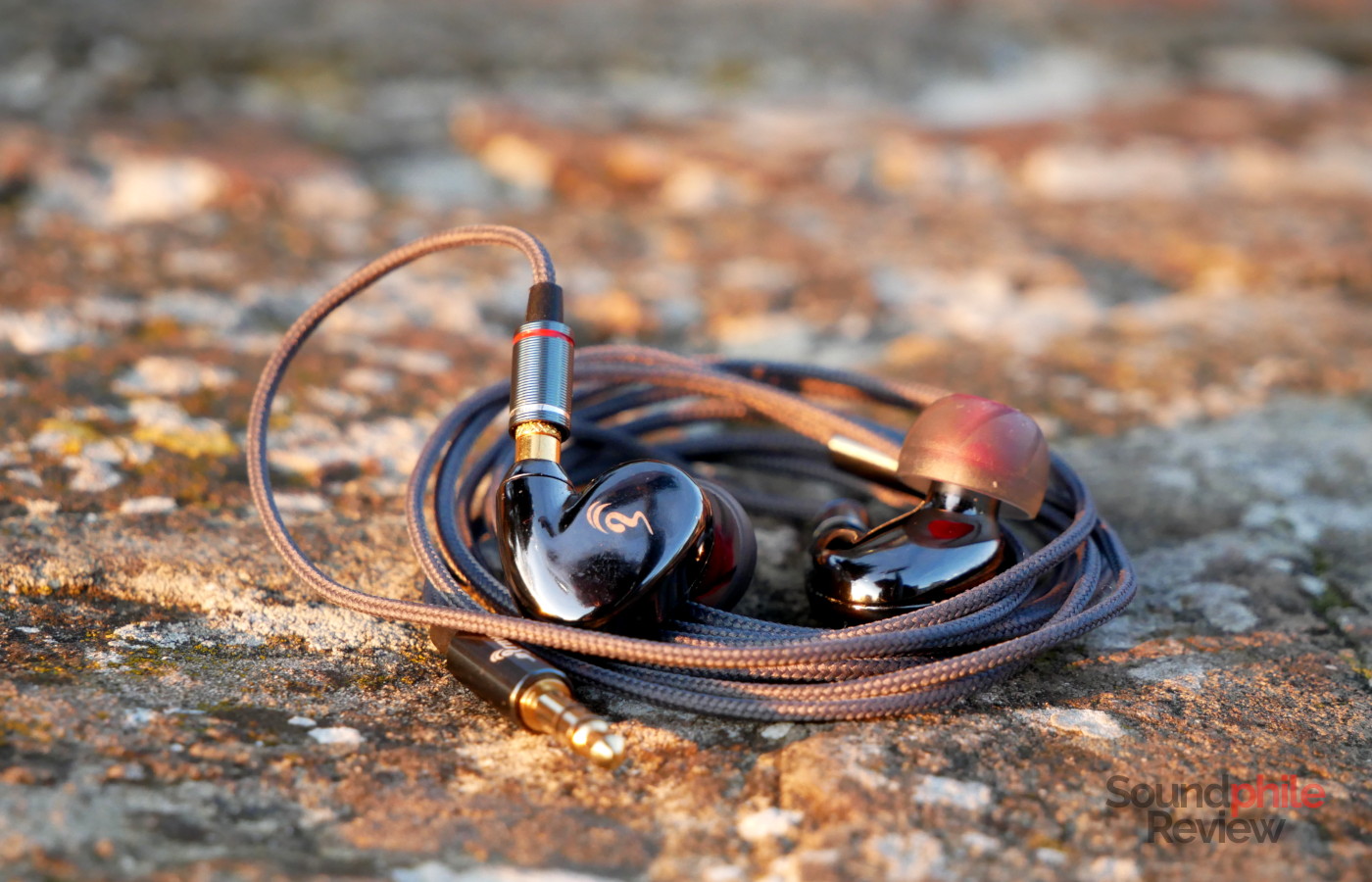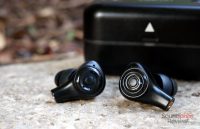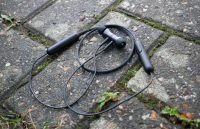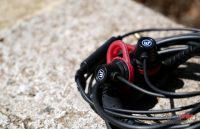With a name like this, the oBravo Cupid really made hordes of people fall in love with them. They are the first foray into the “affordable” territory of oBravo, a company known for their boutique in-ears whose cost goes as far up as $10,000. oBravo gathered a large fan base, despite their tuning choices often being at least polarising. Due to these being the first earphones in the sub-$400 segment by oBravo, they’ve been selling like hot cakes since their launch due to the extremely high expectations of the brand – if they can make $10,000 earphones that so many people praise, their more affordable offerings must be at least very good, right?
The Cupid is, however, no exception to the polarisation often induced by oBravo products: there are people who love them and say they are the best thing since sliced bread, and there are people who are not convinced by them. I am part of the latter group, as you may have imagined reading the title. I’m going to explain why.
Disclaimer: I received this unit free of charge from oBravo UK’s press office – a large “thank you” to Ross and Phil for making this review possible. I actually received a first unit that I was told to be defective, based on a first version of this review I wrote. You can buy a unit from Audio Concierge at £169 for the Basic version, £249 for the Prime version and £299 for the Ultimate version.
TL;DR: recap
| Pros |
Cons |
| Well-built
Comfortable, well-made design Good technical ability |
Proprietary MMCX plug
Sharp peaks in upper midrange and lower treble Overly strong bass |
Rating: 6.7/10
Packaging & Accessories
The package is the same for all Cupid versions, with some changes in the accessories being available inside it. Inside the cardboard box are the earphones with their removable cable and three sizes of silicone eartips. Those tips are similar (but not identical) to the Spiral Dots.
Design & Comfort
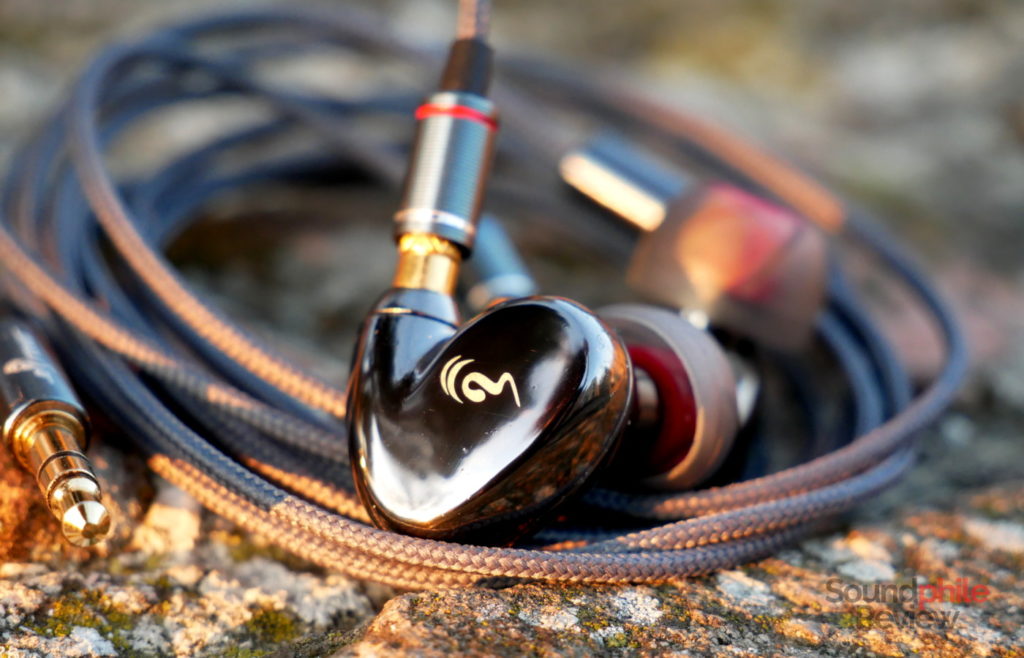
The shape of the shells reminds me of the RHA T20i, even though there are some apparent differences. The biggest one is the finish though: whereas the T20i are brushed steel, the Cupid are made of some metal (aluminium?) which has a shiny polished finish. The other difference is that the oMMCX connector sits atop a longer protrusion than that of the T20i. The Cupid are also leaner, which also leads them to be somewhat more comfortable.
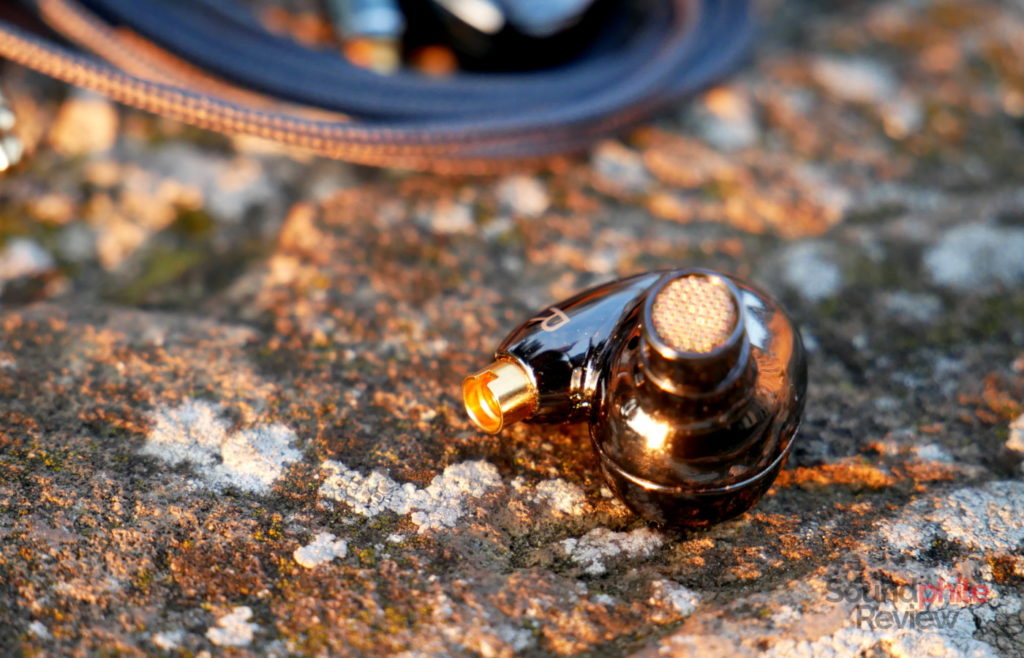
There’s no denying that the Cupid appear to be really well made. They appear to be premium headphones, and I guess that was the precise intent of the manufacturer. The shells seem to say “hey, look, we’re costly and refined” – and they indeed look like that. They’re also very well made and assembled, too, with a very polished finish. The fact that they’re shiny exposes them to scuffs and marks that come with active usage over time, but it’s undeniably beautiful.
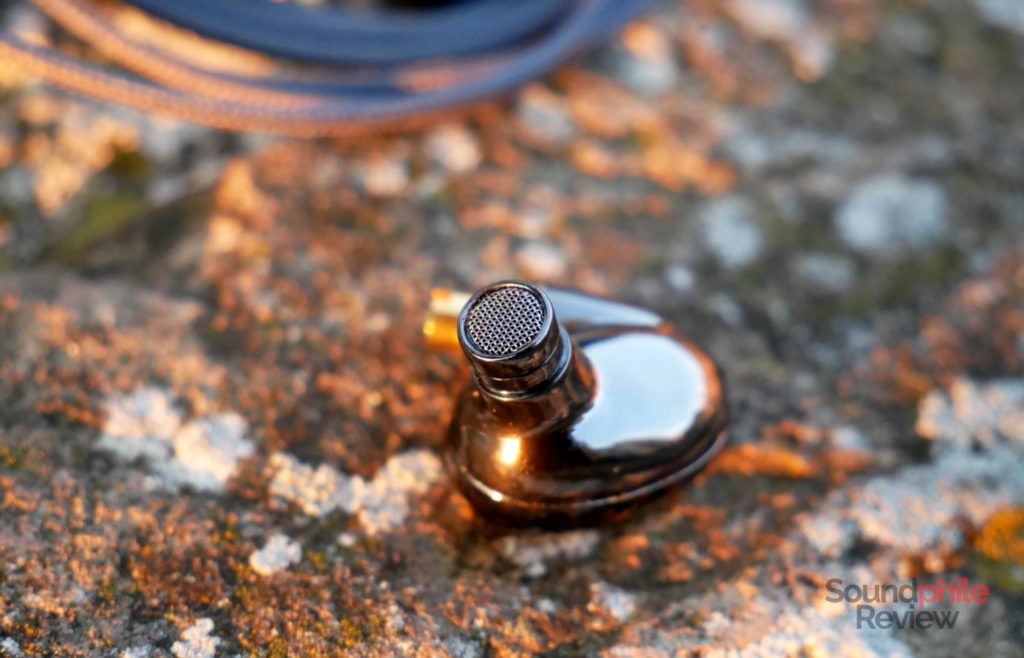
There are not that many earphones with an over-ear cable design I find really comfortable, but the Cupid are among those. The shells are small enough for them to fit even in smaller ears, so in normal-sized ears they should fit easily and comfortably. I personally found that they could sit in my ears for around four hours and I still did not feel any fatigue.
Using the stock tips isolation is really low, to the point it is almost non-existent. The situation improves when using foam tips, but isolation is still limited. I would say the oBravo Cupid are ideal for silent environments, so typically homes and quiet offices. Unless one cranks up the volume, it is really difficult to hear the music even in moderately noisy situations (e.g. residential streets with passing vehicles).
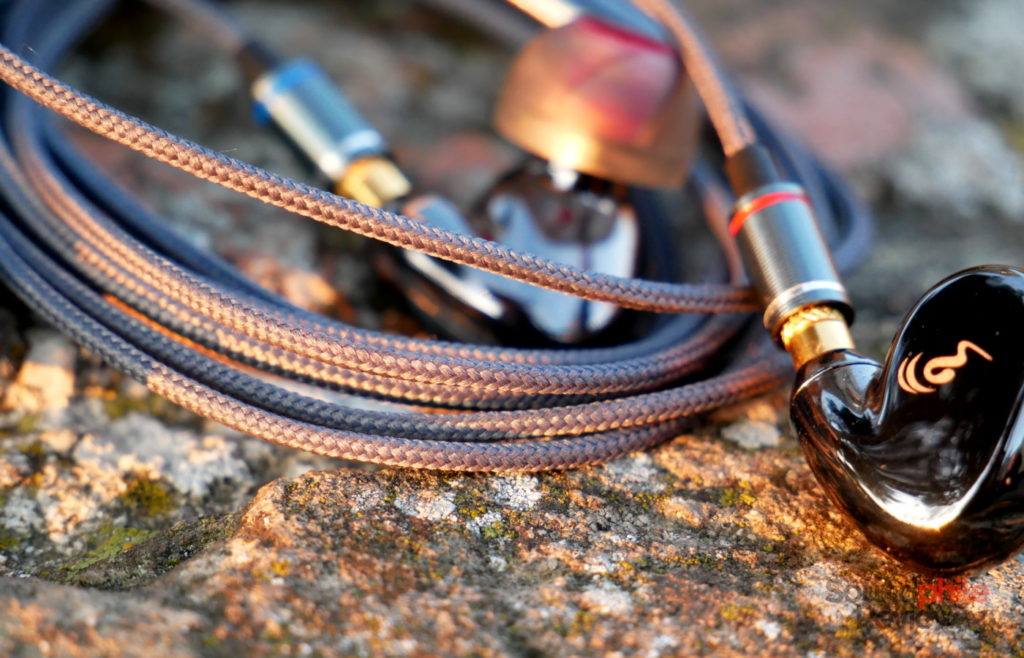
The cable (together with related adapters) is the only difference between the various oBravo Cupid versions. The “Prime” and “Ultimate” versions sport fancier silver-plated cables with 2.5 mm terminations, whereas the Cupid Basic I got has a 3.5 mm single-ended jack. The cable of the Basic version is thin, but it is covered with woven fabric that makes it sturdy. It’s adequately soft and malleable, so it’s really easy to like it. As it is thin and covered in fabric it is also really comfortable to wear. Alas the cable connector is proprietary: it is a variation on the MMCX theme called oMMCX, which has a longer tip that makes it impossible to use other cables. I never like proprietary things (hey, I’m a Linux user for that reason), even though in this case the company sells their oMMCX connectors so one can solder them to their cables. It’s definitely not ideal, but we don’t live in a perfect world after all, do we?
Sound & Specs
As I usually do with all products, I tested the oBravo Cupid using a variety of sources. Those include a Shanling M2X, a Radsone EarStudio ES100 and a Burson Audio Playmate connected to my PC. In all cases sources files were the same – mostly FLACs in 16 bit / 44.1 kHz resolution.
oBravo Cupid |
| Frequency response | 20 – 40,000 Hz |
| Impedance | 16 Ω |
| Sensitivity | 105 dB |
“Tip rolling”, which is the act of switching default eartips with others (if you want to take a tour into this magical world, have a look at my best eartips guide), is not as rewarding as with other earphones. Default eartips work very well and are the ones that offer the best frequency response. On top of that, they also offer the largest soundstage. I tried using Dekoni Bulletz eartips and the result did not impress me: the sound was more congested and dark than when using stock tips. I therefore used the stock tips when writing the review.
Soundstage is more than decently wide for closed-backs, but it doesn’t offer much depth. Instruments appear as if they were playing near the listener in a relatively large room, so the sound gives you some feeling of space. Imaging is good, with a placement of instruments on the stage that is subtler than the usual “left-centre-right” but which has little more than that. Instrument separation is by far the best quality of the Cupid, as the sound is overall clean and clear and instruments are separated well enough for one to be able to pick them out individually.
The overall signature of the oBravo Cupid is V-shaped, with a large emphasis on the sub-bass area and on the upper midrange and lower treble. It is an uncommon tuning for sure, and one that fits some genres better than others as well.
Bass is emphasised and gives a dark tonality to the sound as a whole. That’s not only because bass in general is prominent, but also because there is a prevalence of sub-bass. The lowest frequencies are in fact the most audible, as the volume is maximum at frequencies below 30 Hz and then it goes down as frequency goes up. This tuning is odd and absolutely uncommon, as the lowest frequencies are usually the least strong. It’s not bad, though: this emphasis on the lower frequencies makes them stand out and contributes to making the sound appear full and with a solid foundation upon which everything else resides. On the other hand, though, this emphasis often makes bass too prominent, to the point it steals the focus from the rest. Take Risingson by Massive Attack: bass is so strong it almost covers voices and the other instruments. Speed is not what I would expect from a dynamic driver, but the oBravo deliver on this front: transients are in fact really fast and decay is short enough for it to remind me a bit more of balanced armatures than of actual dynamic drivers. That’s a good thing, though: I found drums to be convincingly fast when listening to the Cupid. There’s also a very good level of detail which leads to bass being very well textured and enjoyable.
Midrange is a bit recessed compared to bass and treble, though by a moderate margin. What you can notice is how the upper midrange is emphasised and gives more prominence to female vocals, breaths, brass instruments and other relatively high-pitched instruments. Male vocals have no specific issues in terms of tonality, but they do sound like all the consonants (especially f, s, t, v…) and breaths are emphasised. As far as I can tell there is a large emphasis in the upper midrange that sounds as such: it is a somewhat rapid climb towards the more emphasised lower treble which influences tonality making things sound especially bright and almost sharp. The area is right at the border with treble (just below 3 kHz), and if you lower it by ~5 dB you get a much more balanced, smoother sound. You may like the tuning as it is, but it is in fact heavily coloured. Violins sometimes sound almost aggressive, almost to the point they’re fatiguing to my ears. As a practical example, violins in Concerning Hobbits from the soundtrack for The Lord of the Rings: the Fellowship of the Rings are a bit more strident than I expect them to be. There is very good detail to be found here and this, together with the good technical ability of the Cupid, makes the midrange really good from a technical perspective.
Treble has the aforementioned emphasis on the lower area which is the (perceived) largest of the whole signature. To be more specific, there are two spikes: one around 3.5 kHz and one at 5 kHz, with the latter being the larger of the two. These two spikes make instruments such as violins and cymbals (plus crashes, hi-hats etc) much more prominent and emphasised than in an ideal neutral representation. To provide an example, the record cracks in Massive Attack’s Risingson are so strong they are in the foreground, clearly audible on top of everything else, instead of being mixed with the rest more-or-less at equal volume. The same happens with tracks such as What about me? by Snarky Puppy – the cymbals are always there at the forefront. If you are into a genre which has heavy presence of cymbals, the Cupid will display them almost on top of everything else often making them quite fatiguing: black metal is definitely not the genre you should listen to with the Cupid. I we consider the positive side of this emphasis, this added energy contributes to making cymbals stand out and allows one to more easily hear all the details – and luckily there’s lots of them! Extension is not great and in fact there seems to be a large drop after the 5 kHz peak which leaves the Cupid with little mid- and upper treble presence.
As I mentioned previously, I think that the oBravo Cupid perform better with some genres than with others. Their signature makes them great for modern genres which require more emphasis on bass. Electronica, hip hop and the other genres which benefit from emphasised bass and treble are portrayed well by the Cupid. Other genres which need a more balanced and neutral-ish approach do not play so well with the Cupid.
oBravo Cupid Comparisons
Considering the price range where the Cupid is, I selected some products to compare them to:
- oBravo Cupid vs Tin HiFi P1: the P1 has Tin HiFi’s house sound, so it is the opposite of the Cupid in many respects. Bass is much less emphasised, to the point where the P1 appears to have almost none compared to the Cupid; that’s not true, however, as the P1 have good bass response without the same depth nor emphasis of the oBravo. Midrange is much more balanced, though it is bright: that’s because it has no sharp peaks, but a well-executed emphasis on the upper area. Treble is more emphasised in general, but it is not characterised by a large peak in the lower area and is much more extended. The end result is a much more balanced (and enjoyable, in my opinion) sound signature. The P1 are also more detailed throughout the whole spectrum. Soundstage also appears wider on the P1, which also have the upper hand on imaging. Instrument separation is a tie.
- oBravo Cupid vs Tin HiFi T4: the T4 are really different from the Cupid. Their bass is much less emphasised and therefore more balanced; it has less presence in the lowest area, but it’s not as obtrusive. It’s also slower, though. Midrange lacks the spike, but is brighter as there is a more diffused emphasis and in turn it sounds much more natural as it is more coherent. Treble is much more extended and more detailed. Detail is in general better on the T4. Soundstage is wider on the T4 by a wide margin, and imaging is better there too. Instrument separation is close enough between the two.
- oBravo Cupid vs Moondrop KXXS: the KXXS follow the Harman curve, so they appear much more balanced and “neutral” than any of the other earphones in this comparison. It’s no wonder, then, that they sound more balanced (and, in my opinion, better) than the Cupid. The KXXS have less bass emphasis, but also less depth; the result is however that bass is much more manageable and in fact it is more controlled (though it is less physical). Midrange is much more balanced as there is no peak; it is much more natural in how it sounds, from voices to all other instruments. Some may not like the fact that the upper area is further forward than the rest, but it’s not by a large margin. Treble is much more extended and it lacks the fatiguing peaks the Cupid has, plus it is at least as detailed as the Cupid’s if not slightly better. Soundstage is slightly smaller on the KXXS, while imaging is slightly better and instrument separation is a bit worse.
Final Thoughts
I’ve read many different opinions on the Cupid, even from readers of Soundphile Review who highly praised them. I’ve even read people saying the Cupid are among the best in-ear headphones under $300. Honestly, I do not share this enthusiasm about them. As much as I like their design, build and fit (man, are they comfortable), I think the tuning hinders them. The technical ability is commendable for the Basic model (£160), but not as great for the other two versions (£250+). No matter how we look at them, there are much better alternatives out there from a tuning perspective. Let me explain this: putting personal preferences apart, the fact that there is such a large emphasis on treble often makes them quite fatiguing, but also makes them not entirely realistic. From a technical perspective, they are indeed quite good – so if you think you would like this kind of tuning, they can be a good choice.
I actually quite enjoy them to listen to electronica with the Cupid as Solar Fields, Aes Dana, Perturbator, MDK and other artists I listen to sound fun and entertaining. Doom metal and stoner metal also sound great. The added bass boost surely is fun. But I cannot recommend them if you listen to anything that is midrange-focused or which a focus on treble of its own (say, jazz, classical, black metal, etc). If you want fun, go ahead and buy them as they are great for that, but I do not recommend them for critical listening without heavy equalisation. I think Cupid shot the arrow at someone else, so I missed my chance to fall in love. And that’s a pity, because these earphones would have so much to offer, had they better tuning!

